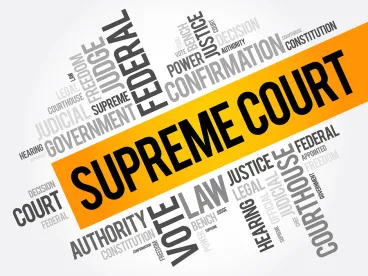In Helsinn Healthcare S.A. v. Teva Pharmaceuticals USA, Inc., the Supreme Court interpreted the “on sale bar” of the America Invents Act (AIA) version of 35 U.S.C. § 102 as unchanged from the pre-AIA version. In so doing, the Court put to rest suggestions that the AIA eliminated “secret sales” as prior art, and expressly held to the contrary.
The “Sale” At Issue
The patent at issue in this case relates to Aloxi®, a drug that treats chemotherapy-induced nausea and vomiting. The “sale” at issue stemmed from two agreements (a License Agreement and a Supply and Purchase Agreement) that were entered two years before the patent application was filed. The agreements were announced in a joint press release and in a filing with the Securities and Exchange Commission. The SEC filing included a partially-redacted copy of the agreements, but did not reveal the price terms or the specific dosage formulations covered by the agreements.
The district court found the agreements did not qualify as a “sale” under the AIA version of § 102, because there was no public disclosure of the details of the invention. The Federal Circuit reversed, finding that public disclosure of the sale itself was enough to make it a prior art “sale” under the AIA.
Read more about the Federal Circuit decision in this article.
The Question Presented To The Supreme Court
Helsinn petitioned the Supreme Court for review based on the following question:
Whether, under the Leahy-Smith America Invents Act, an inventor’s sale of an invention to a third party that is obligated to keep the invention confidential qualifies as prior art for purposes of determining the patentability of the invention.
Ultimately, what the Court had to decide was whether the on sale bar was impacted by the new “catch-all” provision in the AIA version of § 102(a)(1), which states in relevant part:
A person shall be entitled to a patent unless … the claimed invention was patented, described in a printed publication, or in public use, on sale, or otherwise available to the public before the effective filing date of the claimed invention.
Helsinn argued, as it had in the Federal Circuit, that the catch-all provision altered the meaning of the on sale bar by requiring any invalidating “sale” to make the invention “available to the public.” This position is consistent with the guidance promulgated by the USPTO when it published the regulations implementing the AIA version of § 102.
The Supreme Court Decision
Justice Thomas wrote the unanimous opinion of the Supreme Court, which held that the scope of the on sale bar under the AIA version of the statue is not changed from pre-AIA law.
The Court noted that “Congress enacted the AIA in 2011 against the backdrop of a substantial body of law interpreting [the pre-AIA] on-sale bar,” including the Court’s previous decision in Pfaff v. Wells Electronics, Inc., 525 U. S. 55, 67 (1998), which set forth this two-part test for triggering an on-sale bar:
- the product must be the subject of a commercial offer for sale and
- the invention must be ready for patenting.
The Court also noted that while its pre-AIA decisions “never addressed the precise question presented in this case, our precedents suggest that a sale or offer of sale need not make an invention available to the public.” Confirming that there was no pre-AIA requirement for publicity, the Court cited pre-AIA Federal Circuit decisions holding that “secret sales” can “invalidate a patent” under the on sale bar.
The Court next cited the principle of statutory construction holding that when Congress reenacts the same statutory language, it is presumed that it intends to adopt “the earlier judicial construction of that phrase.” Here, the Court noted, the AIA version of § 102 includes the same on sale bar language—”on sale”—as the pre-AIA version of the statute. Although the Court acknowledged the new catch-all phrase in § 102, it agreed with the Solicitor General that adding that phrase would be an “oblique way of attempting to overturn that settled body of law.”
The addition of “or otherwise available to the public” is simply not enough of a change for us to conclude that Congress intended to alter the meaning of the reenacted term “on sale.”
Thus, the Court made clear that pre-AIA case law relating to the on sale bar remains relevant under the AIA, and expressly held that “an inventor’s sale of an invention to a third party who is obligated to keep the invention confidential can qualify as prior art under §102.”
What Does The Catch-All Phrase Catch?
This decision suggests that the catch-all phrase does not impact the scope of terms carried forward from the pre-AIA version of § 102, so we are left to wonder what the catch-all phrase adds to the AIA version of the statute. One possibility is that, although a few court decisions have treated certain electronic publications as a “printed publication” under § 102, Congress wanted to ensure that the statute encompasses publication in the digital age.




 />i
/>i

